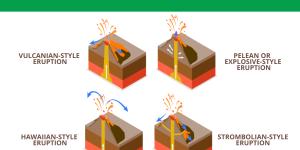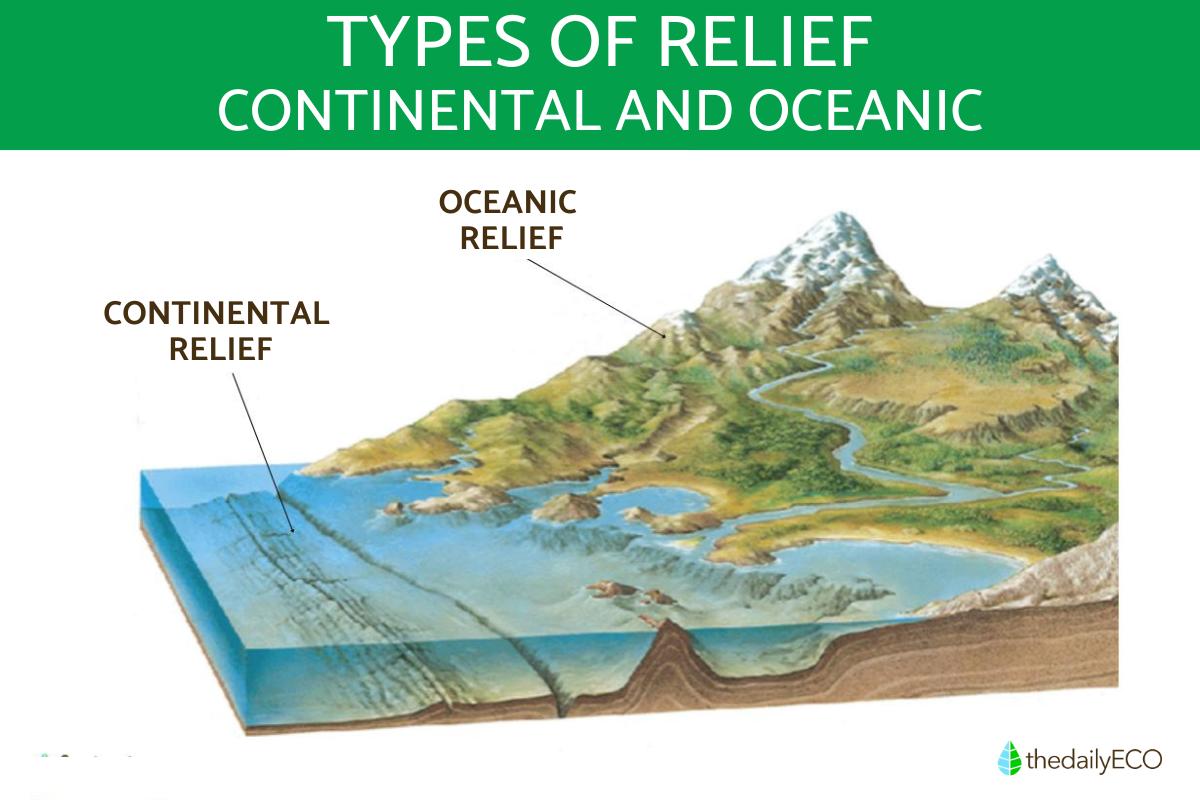What Are the Main Types of Relief?


Relief features are the building blocks of our world, shaping landscapes, habitats, and even influencing weather patterns. Mountains act as wind barriers and water sources, while valleys influence drainage and temperatures. Understanding relief is crucial for land-use planning, infrastructure development, and mitigating natural hazards.
In this article by thedaiyECO we will explore the main types of relief, their key characteristics and the ways they shape and influence our environment.
What is relief and how do they form?
Relief refers to the three-dimensional tapestry woven by the Earth's surface. It encompasses the rise and fall of the land, from towering mountains and rolling hills to sprawling plains, sunken valleys, and elevated plateaus.
The diversity of the Earth's surface shapes we see today is the result of different processes that have occurred over millions of years and continue to shape the land.
These processes can be broadly categorized into internal and external processes. The processes operate simultaneously but originate from different sources and mechanisms.
Internal processes of relief formation
The Earth's interior consists of layers of rocks with different compositions and densities. These differences cause movements in the Earth's outermost layer, known as the crust.
The crust is fragmented into tectonic plates that have been moving for millions of years. These movements result in the separation and collision of plates, forming continents, islands, mountain chains, and volcanoes.
Tectonic plates are constantly in motion, and their interactions can cause earthquakes and tsunamis.
External processes of relief formation
External processes shape the Earth's surface through biological, climatic, chemical, and physical actions that break down rocks. These processes include:
- Weathering: rocks fragment and disintegrate due to temperature changes, water action, and plant roots. This can also involve the dissolution of minerals when oxygen in water reacts with them.
- Erosion: Rock materials are transported and deposited in lower areas of relief. This can be driven by wind, water, or human activity.
A specific example of external relief formation is coastal relief. The coastline evolves mainly due to the sea's actions, which include erosion and the deposition of sediments carried by water.
What is continental Relief?
Continental relief, also known as terrestrial relief or emerged lands, refers to the various landforms found above sea level. These formations include mountains, plateaus, and plains, each with distinct characteristics and elevations. Below, we will describe these different types of terrestrial relief.
Mountains
Mountains are the highest elevations on the Earth's surface, characterized by their uneven terrain and significant height differences. Key features of mountains include:
- Mountain Ranges: when individual mountains are aligned in a series, they form a mountain range.
- Mountain Chains: multiple mountain ranges together form a mountain chain.
- Valleys: the depressions that separate two mountain ranges are known as valleys.
- Hills and mountain ranges: lower in height compared to mountains, these are often referred to as hills or smaller mountain ranges.
Plateaus
Plateaus are elevated landforms with relatively flat tops, and their height can exceed 200 meters above sea level. Similar to mountains, plateaus can be separated by valleys. They are also known as tablelands or mesas. Key characteristics of plateaus include:
- Elevation: Plateaus are higher than the surrounding terrain, but have flat or gently rolling surfaces.
- Separation by valleys: Like mountains, they can be interspersed with valleys.
Plains
Plains are large, flat expanses of land with minimal elevation changes. They are typically located at altitudes less than 200 meters above sea level and often cover extensive areas. Important features of plains include:
- Flatness: plains have slight elevations and generally flat surfaces.
- River crossings: plains are frequently traversed by rivers and streams, contributing to their fertile soil and suitability for agriculture.
Explore the fascinating theory of continental drift and discover the lost supercontinent, Rodinia, in our other article.

What is oceanic relief?
Oceanic relief, also known as submerged relief, refers to the various landforms found below sea level. These underwater formations include continental platforms, continental slopes, and abyssal plains, each with distinct characteristics and depths. Here, we will describe these main forms of underwater relief.
Continental platform
The continental platform, or continental shelf, is the area of the seabed closest to the coast and can extend down to about 200 meters deep. Key features include:
- Sedimentation: sand sedimentation predominates in this region.
- Resource Deposits: some continental shelves contain large deposits of minerals and oil.
- Sunlight penetration: This area is unique because it is the only part of the ocean where sunlight can penetrate, allowing for a diverse range of marine plant and animal life.
Continental Slope
The continental slope marks the boundary where the continental shelf ends and the ocean floor begins to drop steeply. Key characteristics include:
- Steep descent: this area features a sharply pronounced descent, often described as a wall reaching depths of 2,000 to 3,000 meters.
- Sediment precipitation: it is an area where sediments accumulate, eventually settling at the bottom to form layers or strata.
Abyssal Plain
The abyssal plain, also known as the ocean basin, is one of the least studied regions of underwater relief due to its extreme depth. However, advancements in technology have provided more insights into this area. Key features include:
- Depth and study: the abyssal plain is very deep, making it challenging to study. However, radar and unmanned submarines have revealed its features.
- Similar to continental relief: it has a relief similar to that of continental landforms, including vast expanses of plains, underwater mountain ranges, hills, and volcanoes.
Did you know that there are also submarine volcanoes? Read all about it in this other article.

If you want to read similar articles to What Are the Main Types of Relief?, we recommend you visit our Facts about nature category.
- Bassols, NB & Palma Ruiz, A. (2012). Geography. Secretariat of Education of Veracruz. Fourth edition.







